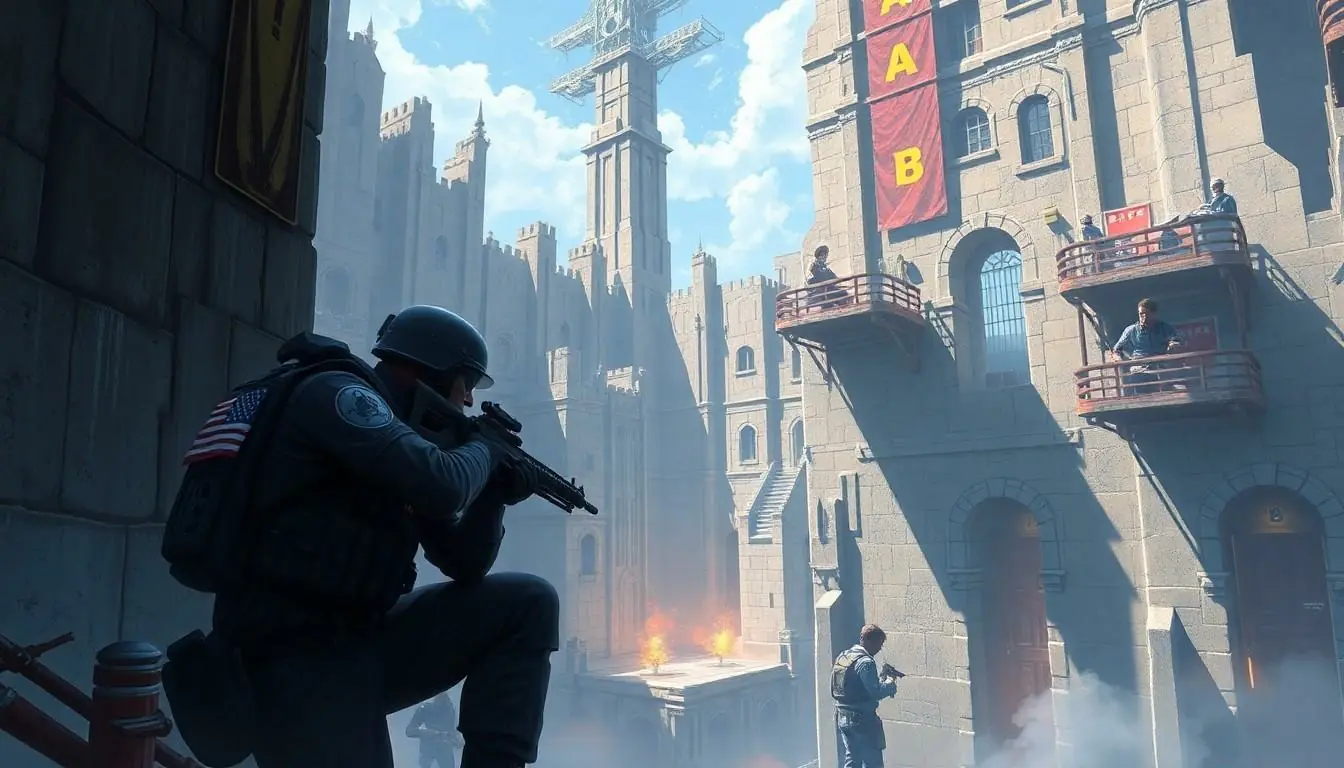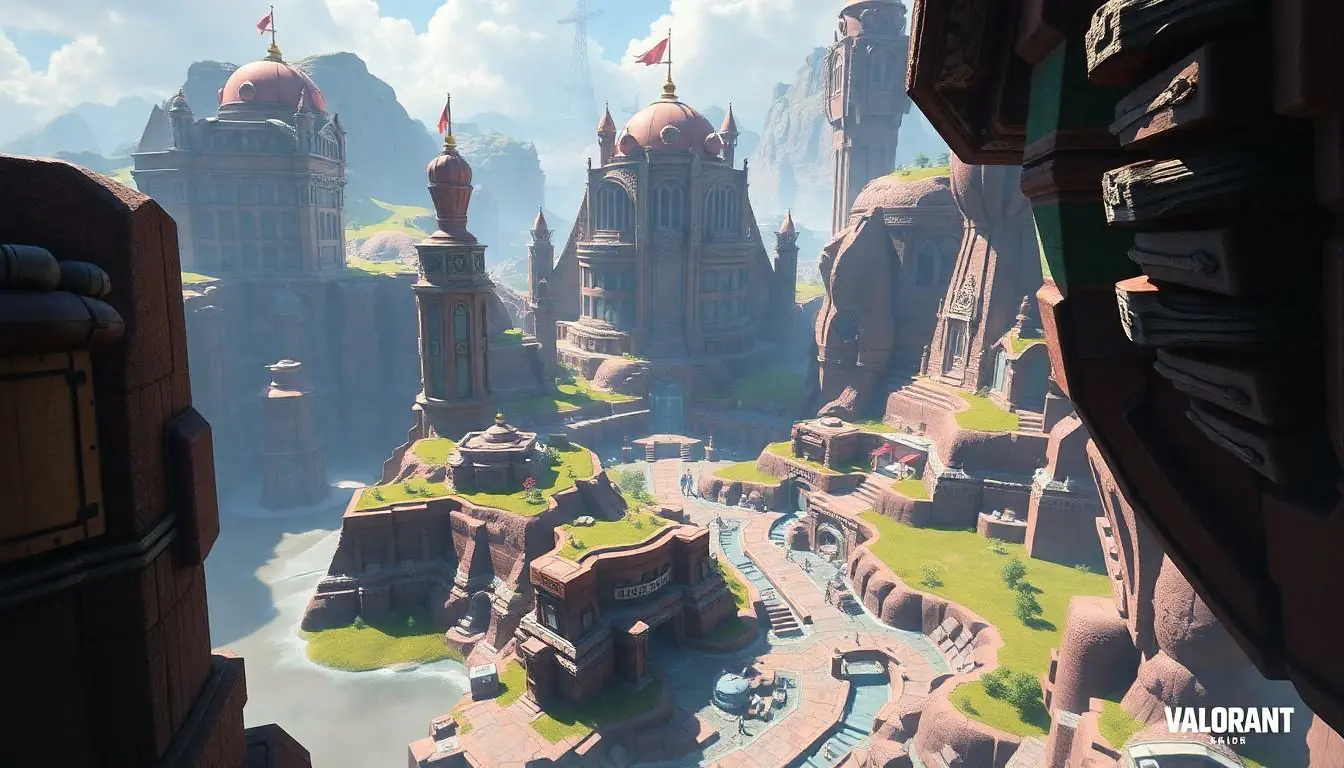Table of Contents
ToggleIn the world of Valorant, the Split map stands as a battleground where strategy and chaos collide. With its verticality and tight corridors, players often find themselves in a love-hate relationship with this unique layout. It’s like that one friend who always shows up uninvited but somehow makes the party more interesting.
Navigating Split can feel like trying to solve a Rubik’s Cube blindfolded, but mastering it can elevate any player’s game. From sneaky flanks to epic clutch moments, the opportunities are endless. So grab your favorite agent, and get ready to dive into the quirks and strategies that make Split a map worth conquering. After all, who doesn’t want to turn the tide of battle while having a blast?
Overview of Valorant Split Map
Split map in Valorant features a unique structure with a blend of vertical elements and narrow corridors, creating an intense gaming environment. Verticality plays a significant role, offering opportunities for elevated positioning and strategic engagement. Players often find themselves maneuvering through tight spaces, requiring precise movement and quick reflexes during encounters.
Key areas on Split include A Site, B Site, and the mid-section, where tactical control often determines the match’s outcome. A Site includes diverse angles for defenders to hold, while B Site requires coordinated pushes to neutralize enemy positions. The central area acts as a pivotal point, enabling players to rotate effectively between sites.
Each side has distinct advantages. Attackers benefit from various routes to approach sites, while defenders can utilize height to gain visibility. Successfully leveraging these aspects often leads to favorable engagements. Players can explore diverse strategies to capitalize on each side’s strengths, enhancing their overall gameplay.
Mastering Split’s layout involves understanding not only the physical space but also the dynamics of maps and agents. Effective communication among teammates increases the likelihood of successful strategies. With practice, players can learn to navigate Split’s complexities, leading to impactful plays that turn the tide of battle.
Key Features of Split Map
Split Map in Valorant boasts distinct characteristics that shape gameplay. Players must adapt to its unique layout to maximize effectiveness in matches.
Verticality and Elevation
Verticality plays a crucial role in Split’s design. Players can gain advantage by utilizing elevated positions throughout the map. Different areas provide ascent options, allowing players to control sightlines and engage enemies from unexpected angles. Elevation affects how players rotate and reposition, significantly influencing match dynamics. Mastering vertical elements requires map knowledge and keen awareness of enemy movements. Those who effectively exploit these heights can create opportunities for advantageous engagements.
Key Locations and Sites
Key locations on Split include A Site, B Site, and the central mid-section. A Site features multiple defensive angles, making it vital for defenders to secure the area effectively. Attackers face challenges but can employ diverse approaches to infiltrate and claim A Site. B Site, on the other hand, necessitates organized teamwork from attackers, as defenders can easily bolster their positions. Control of the mid-section serves as a strategic advantage, facilitating rotations between sites. Understanding these key zones empowers players with insights needed for tactical planning and execution during matches.
Strategies for Playing on Split
Navigating the Split map in Valorant demands specific strategies for both attacking and defending. Each side of the map presents distinct tactics for players to maximize their effectiveness.
Attacking Strategies
Focus on using multiple paths to pressure defending teams, as attackers can approach sites from various angles. Coordinating utility usage enhances pushes; smoke screens can obscure vision while flashes disorient opponents. Prioritize mid-control to create pressure on both A and B sites, promoting diverse attack opportunities. Communication plays a crucial role; sharing information about enemy positions allows for strategic adaptations. Take advantage of elevated positions to surprise defenders and control high ground, which can shift the tide of the engagement.
Defending Strategies
Emphasize positioning to capitalize on Split’s verticality while holding sites. Defenders should occupy elevated spots for better sightlines, as these positions provide strategic advantages over attackers. Use utility effectively to delay pushes; placing smoke or flash abilities at choke points hampers enemy advances. Rotate swiftly between sites, as mid-control allows rapid movements to reinforce teammates. Establishing strong communication ensures defenders coordinate their efforts, creating a robust defense. Focus on using sound cues to anticipate enemy movements, providing critical information to the team.
Tips for Optimizing Gameplay
Focusing on effective strategies greatly enhances the gameplay experience on the Split map.
Communication and Teamwork
Effective communication holds significant importance in Split. Players must share information about enemy positions and potential strategies. Utilizing voice chat promotes quick and efficient adjustments during encounters. Team coordination greatly impacts decision-making, especially during crucial pushes or holds. Establishing specific callouts for locations aids in clarity during intense moments. Practicing together fosters synergy, allowing players to better anticipate team actions. Stronger teamwork equates to better execution of strategies across both sites and mid.
Agent Selection and Roles
Choosing the right agents significantly influences gameplay success on Split. Selecting duelists can provide aggressive entries, while controllers assist in blocking enemy sightlines. Initiators excel at gathering information, creating openings for their teammates. A balanced composition between these roles ensures depth in strategy and adaptability. An efficient line-up allows teams to execute diverse tactics, whether pushing A or B site. Emphasizing agents that complement each other’s abilities enhances overall performance. Each round, agent selection should reflect the team’s plan and desired outcomes.
Conclusion
Mastering the Split map in Valorant is essential for players looking to elevate their gameplay. Its unique design challenges players to think critically and adapt their strategies on the fly. By embracing the map’s verticality and tight corridors, players can create opportunities for impactful plays that can shift the momentum of a match.
Effective communication and teamwork are vital for navigating Split’s complexities. Sharing information and coordinating strategies not only enhances individual performance but also strengthens team dynamics. With the right agent selection and a focus on key locations, players can optimize their approach to both attacking and defending.
Ultimately, Split offers a rich and rewarding experience for those willing to invest the time to master its intricacies. Players who thrive on challenge will find themselves greatly rewarded as they explore the depths of this dynamic map.





